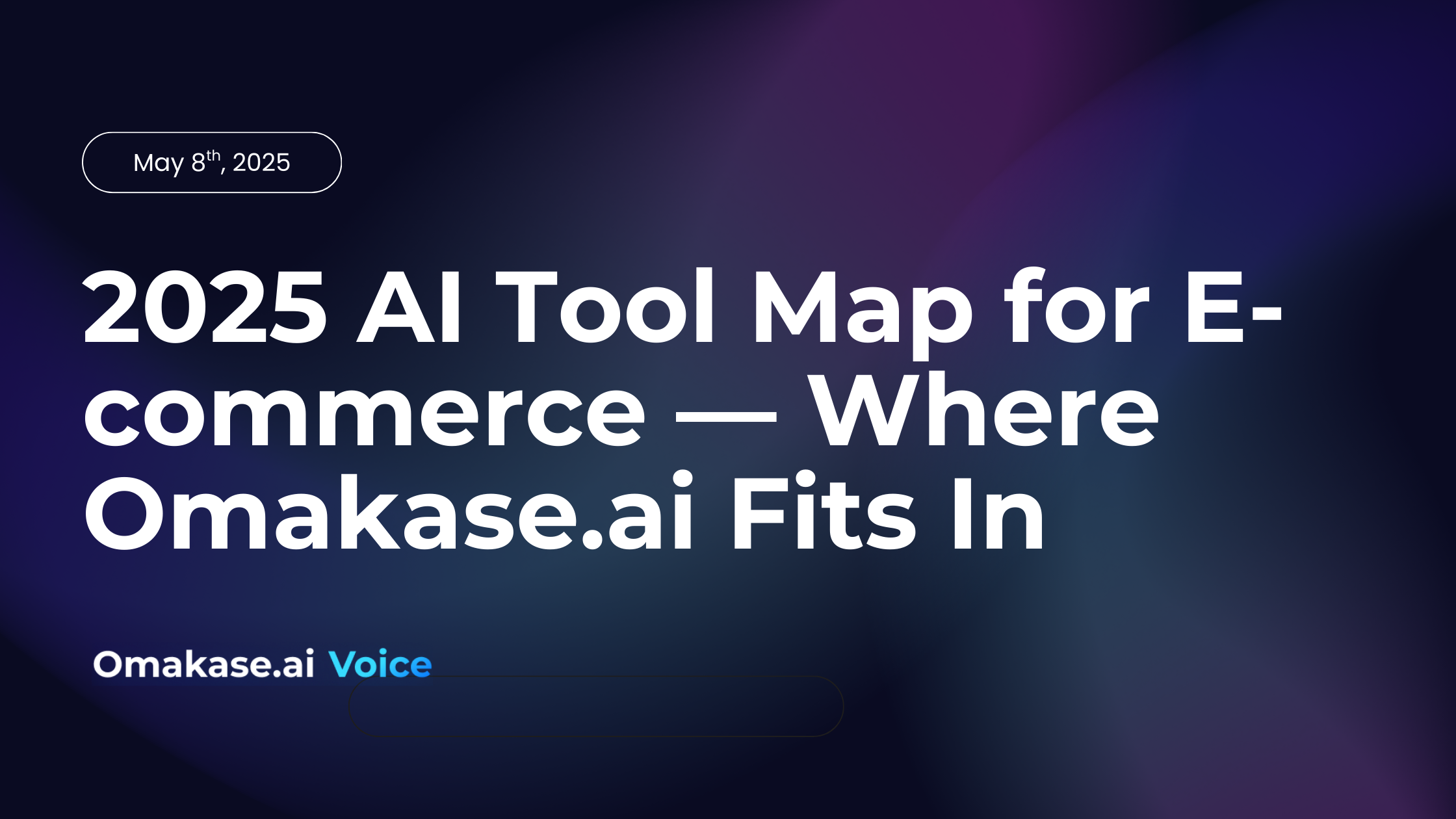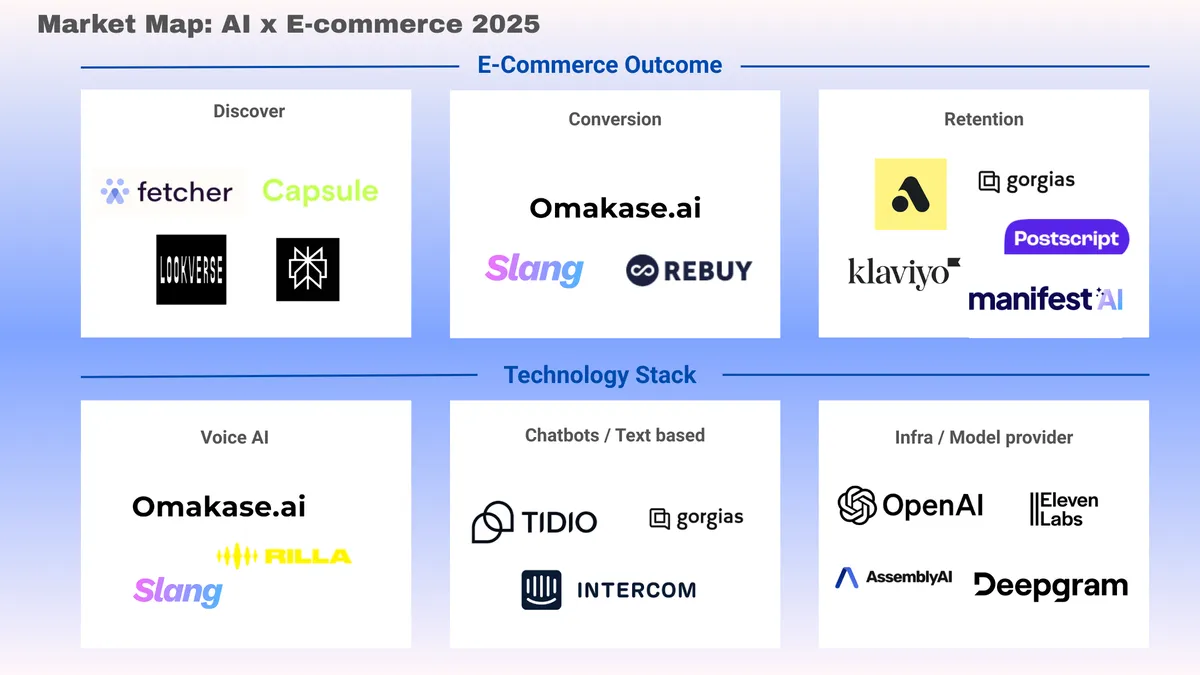
2025 AI Tool Map for E-commerce — Where Omakase.ai Fits In
The AI landscape for e-commerce is evolving fast. Tools are everywhere—automating support, recommending products, and driving re-engagement—but very few are focused on the one metric that matters most: conversion.
To cut through the noise, we’ve mapped out the 2025 AI Tool Stack for E-commerce, organized by what actually impacts your customer journey—from discovery to retention—and the infrastructure powering it all.
🧠 The 2025 E-commerce AI Tool Map

🔍 Discovery
Examples:
- Perplexity (text-based Q&A search)
- Fetcher (AI product search)
- Capsule, Lookverse (visual-based discovery)
Purpose:
Help users find relevant products faster through intelligent search and browsing experiences.
Differentiator:
Frontline engagement—these tools meet customers when interest is forming, but before purchase intent is strong.
🛒 Conversion (Hero Block)
Examples:
- Omakase.ai (voice AI sales agent)
- Slang.ai (restaurant voice ordering)
- Rebuy (upsell logic engine)
Purpose:
Turn shoppers into buyers by reducing friction, personalizing offers, and guiding decisions in real time.
Differentiator:
Omakase.ai leads here by offering a voice-native, human-like assistant that actively drives sales—not just support or passive nudging.
🔁 Retention
Examples:
- Klaviyo (email flows)
- Attentive, Postscript (SMS retargeting)
- Gorgias (customer support)
- ManifestAI (chat-based product guide)
Purpose:
Re-engage customers post-purchase and reduce churn through messaging and automation.
Differentiator:
Delayed but scalable interaction—these tools maintain lifecycle communication but don’t influence point-of-sale decisions like voice agents can.
2. 🧩 Tech Stack
These are the tools and layers that power the outcomes above—enabling automation, conversation, and voice intelligence.
🎙️ Voice AI Layer
Examples:
- Omakase.ai
- Slang.ai
- Rilla (voice data insights)
Purpose:
Enable real-time spoken interaction that simulates a human conversation with zero wait time or text fatigue.
Differentiator:
Voice-first interaction is faster, more intuitive, and unlocks high purchase intent moments that chatbots miss.
💬 Chatbots / Text Interfaces
Examples:
- Tidio
- Intercom
- Gorgias
Purpose:
Automate basic customer service and product questions via chat flows or rule-based logic.
Differentiator:
Text-based and cost-efficient—but often deliver a frustrating UX and have limited sales impact.
⚙️ Infra & Model Providers (Foundational Layer)
Examples:
- OpenAI (LLMs like GPT)
- ElevenLabs (voice synthesis)
- Deepgram (speech-to-text)
- AssemblyAI (voice data intelligence)
Purpose:
Provide the foundational tech that powers advanced AI use cases like speech, natural language, and personalization.
Differentiator:
These are not end-user tools, but are essential for AI solutions like Omakase.ai to function with speed, accuracy, and nuance.
🧠 Where Omakase.ai Stands
Omakase.ai bridges both layers. It uses top-tier AI models to power a real-time voice agent that actually converts visitors—while other tools focus on automating support or retargeting customers after they’ve left.
Instead of passive flows or post-sale messaging, Omakase.ai delivers what e-commerce teams really need:
✅ Active conversation
✅ Frictionless UX
✅ Revenue-driving AI

Final Thoughts
In a sea of 2025 AI tools, Omakase.ai stands out by doing one thing better than anyone else—converting through conversation.
Voice isn’t the future. It’s already here.
👉 Try Omakase.ai on your site today and see how voice can change the way you sell.